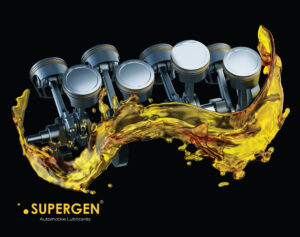A well- lubricated engine will burn fuel more efficiently and thus perform better. Engine oil lubricates the various elements of an engine in order to eliminate friction and excessive power loss. In a nutshell, engine oil is the engine’s lifeblood. It protects the engine from rust, corrosion, and other impurities, as well as lubricating it to reduce wear and tear. Because the internal elements of an engine are constantly moving against each other, friction can cause significant engine damage if not properly lubricated with high-quality engine oil. Because engine oil is such an important component of the engine, each vehicle has its own engine oil requirement based on its design and usage. Car owners should always follow the manufacturer’s recommendations for the grade and type of engine oil to use in their vehicle. The best engine oil recommended for Honda Amaze is 5W 30.
How much engine oil does the Honda Amaze Require?
The amount of engine oil required for a Honda Amaze varies slightly based on the engine model and capacity. However, as a general rule, mostHonda Amaze models require roughly 3.2 to 4.4 liters of engine oil for a complete oil change.
To get an accurate measurement, consult your Honda Amaze’s owner’s manual or the information on the oil cap, which will reveal the exact oil capacity for your specific engine variant. These sources will also specify the suggested oil type and viscosity, as well as any other specifications or approvals that are required.When adding oil, pour it in modest increments and use the dipstick to check the oil level until it reaches the optimal range. Avoid overfilling the oil, as this might cause engine harm.
To ensure the correct oil selection and to gain the most up-to-date information, it is recommended to check the owner’s manual or contact a Honda authorized service center for the latest recommendations tailored to your specific vehicle model and year.
The Importance of an Oil Change
Motor oil lubricates the many moving elements of an engine, preventing damage and keeping your engine operating smoothly. By-products of combustion are gathered in your engine oil every time it operates. If impurities accumulate beyond the capacity of the oil, they accumulate in the engine and cause deposits, sludge, and wear.
These impurities can have a severe impact on your vehicle’s overall performance and economy if the oil is not changed on a regular basis. In addition to changing your oil as suggested, it’s critical to maintain your car on a regular basis and use high-quality motor oil.There are various advantages to changing your oil on time. Regular oil changes increase engine performance, extend engine life, and help your vehicle achieve maximum gas mileage. Clean oil is critical for keeping the engine and all its controls lubricated and working smoothly.
How frequently should the oil in Honda Amaze be changed?
The engine oil keeps the engine clean and oiled, allowing it to run smoothly. As it circulates through the engine, it begins to acquire dirt and grime. The engine’s heat also causes it to degrade or evaporate. As a result, the engine oil in an automobile must be replaced on a regular basis. The change interval is determined by several things. The type and quality of oil used, the engine design, the circumstances and frequency of usage, the owner’s driving style, and other factors all influence the engine oil change interval for individual vehicles. Your car’s owner’s manual will tell you how often the engine oil should be changed based on the manufacturer’s recommendations. This change interval should be followed as closely as feasible. The engine oil change interval for the Honda Amaze is once every 7,500-10,000 miles.
Choose the Right Engine Oil for your Honda Amaze-Motor Grades Explained
The numbers on the bottle of motor oil signify the oil’s viscosity rating. The viscosity rating of an oil is a measure of its resistance to flow at different temperatures.The viscosity rating is represented by two integers separated by a “W” (for winter). For instance, 5W-30 or 10W-40. Each number represents the following:
The first number (for example, 5W or 10W) represents the viscosity of the oil at low temperatures. When the engine is cold, it reflects how freely the oil flows. The lower the number, the better the cold-start performance of the oil. A lower “W” number indicates that the oil will flow more easily at low temperatures, resulting in improved engine protection at startup.
The second number (for example, 30 or 40) shows the viscosity of the oil at high temperatures. It demonstrates how resistant the oil is to thinning while the engine is hot. Higher numbers suggest a thicker oil that retains its viscosity better at high temperatures and protects the engine.
Simply put, a lower first number suggests improved cold-start efficiency, while a higher second number indicates improved high-temperature protection. According to the manufacturer’s guidelines, different cars require different viscosity grades. It is critical to examine your vehicle’s owner’s manual to determine the proper viscosity grade for your engine. The advice of the manufacturer is based on parameters such as engine design, operating conditions, and environment. Using the proper viscosity oil ensures that your engine performs, protects, and runs efficiently.









